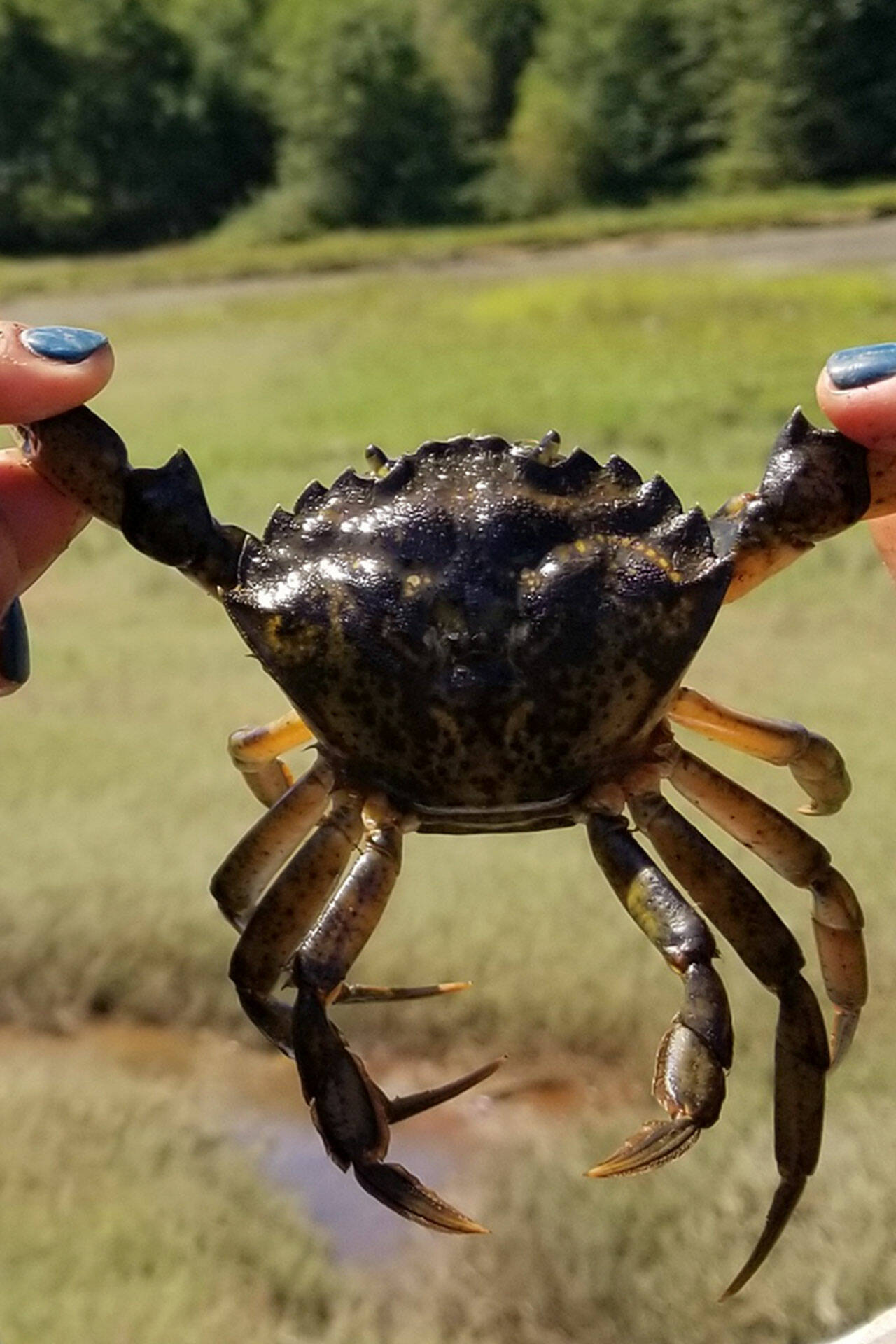Last week, Gov. Jay Inslee issued an emergency order urging legislative funding towards eradicating or limiting permanent populations of invasive European green crabs in the Lummi Nation and on Washington’s outer coast.
Last year, the Lummi Nation reported 70,000 green crabs in its sea pond and the Makah Tribe in Neah Bay reported its highest count (1,460) since the first sighting of the crab in 2017.
European green crab, known by their five spines on the side of each eye, is a “a globally damaging invasive species that poses a threat to Washington’s economic, environmental, and cultural resources,” according to state Fish and Wildlife officials.
The governor’s emergency order issued Jan. 19 directs Fish and Wildlife staff to implement emergency measures with funding already available while urging the state Legislature to provide additional emergency funding as requested by Fish and Wildlife as soon as possible.
The agency has requested $8.9 million.
Its Aquatic Invasive Species Unit determined $2.3 million appropriated by the 2021 State Legislature for European green crab management in the 2021–23 biennium was not enough funds to control the growing numbers.
Inslee’s order also directs the state Department of Ecology — and asks the state Department of Natural Resources and the State Parks and Recreation Commission — to identify European green crab management as a high priority on state-owned aquatic lands and to facilitate implementing the emergency measures.
“We welcome this support from Gov. Inslee, and we are working on next steps in coordination with tribal co-managers, other management partners, and stakeholders,” said Allen Pleus, Aquatic Invasive Species policy coordinator.
Through June 30, Fish and Wildlife set short-term goals to hire, train and equip staff for green crab trapping to begin in March, public outreach to start in April, and coordinate and develop a policy forum for a regional strategy.
Green crab totals in Lummi Reservation’s pond went from 41 in 2019 to 2,670 in 2020, and to more than 70,000 in 2021, Fish and Wildlife reported. The numbers prompted the Lummi Indian Business Council to declare a disaster in November 2021.
This made it Washington state’s largest infestation along inland shorelines, according to Washington Sea Grant’s Crab Team.
Washington Sea Grant continues a network of 55 early detection/monitoring sites along inland shorelines this year, including Pysht (one site), Dungeness Bay (four), Sequim Bay (two) and Discovery Bay (one) along with newer sites in coastal estuaries, such as Makah Bay monitored by tribal, agency and shellfish growers, and volunteers.
Green crabs were first detected in Dungeness in 2017 after years of monitoring with 96 green crabs caught after large trapping efforts.
Last year, resource managers with the Washington Maritime National Wildlife Refuge in Dungeness and Jamestown S’Klallam Tribe at Sequim Bay reported 24 combined captures with eight in Dungeness and 16 in Blyn. Jefferson County only had two captures by Bishop’s Point.
Resource managers say if you find a green crab or its shell, report it online to crabteam@uw.edu, but leave it in place. For more about green crabs, see wsg.washington.edu/crabteam.



